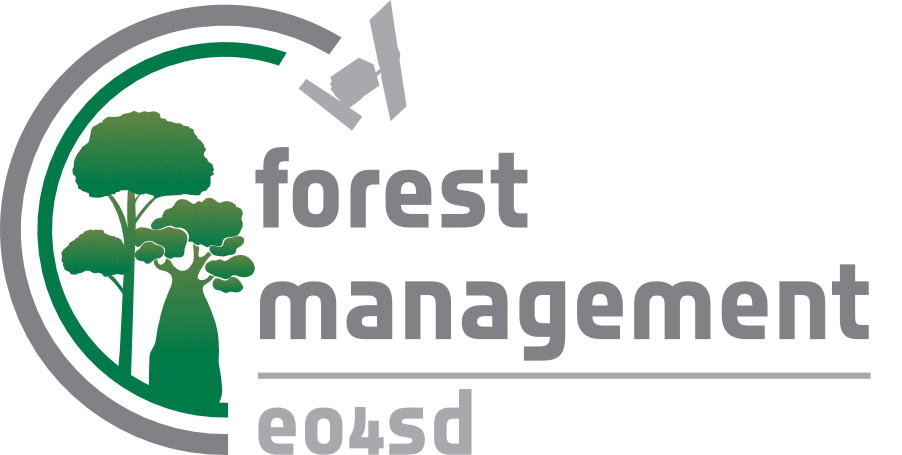EO4SD forest management
The Forest Area and Change products form the basis for determining gross deforestation rates and for the detection of forest regrowth or replanting. They are used as the benchmark for deforestation/disturbance detection by early warning systems.
There are two related capabilities:
- The Forest Area Status shows the extent of the forest at a given point in time. This product takes into account country-specific forest definitions, such as the minimum area of a forest patch and minimum canopy cover density. All forest types are consolidated into a single ‘forest’ category; other land cover types are aggregated into a ‘non-forest’ category. The Forest Area Status product is derived from high resolution (HR) satellite data.
- The corresponding Forest Change product is derived by a direct time series image classification approach to identify stable and non-stable forest areas.
The products have many applications in forest management, forest restoration, REDD+ and land-use planning as it offers an accurate calculation of the spatial extent and location of forested areas and changes within those areas.
The Forest Area and Change product can also be used as an input for:
- Assessment of Activity Data for REDD+
- Analysis of Degradation and Deforestation
- Sustainable Forest Management (SFM)
- Forest Landscape Restoration (FLR)
- Identification of High Carbon Stock (HCS) forests
- Forest management/ planning
- Input variable to spatially explicit modelling of forest biomass and change
The animated image example below shows an example of Forest Area change mapping at 20m spatial resolution. The analyses of Forest Cover in 2016 and 2018 revealed small scale deforestation events along streets and in the surrounding of existing agriculture. The study was conducted in Cameroon within the EOMonDis project.
PRODUCT SPECIFICATIONS
CONTENT
- Detailed mapping of forested areas by incorporating a national- or user-defined forest definition. The product is based on a forest mask, a tree cover density map and additional data to separate ‘Forest’ land use from other land use classes.
- Changes can be mapped between two or more points in time, showing increase and decrease of tree cover density in percent in a landscape using discrete classes ranging from 1-100%.
GEOGRAPHICAL COVERAGE
Regional, National, Sub-national and Local
TEMPORAL COVERAGE & FREQUENCY
Historical data and/or specific dates; Continuous update (e.g. every 12 months, 5 years) is possible depending on availability of satellite data
EO DATA AND SPATIAL RESOLUTION
High Resolution (HR) satellite data, (e.g. Sentinel-1 and Sentinel-2) with 10 m resolution from 2016 onwards, historic Landsat Missions data with 30 m resolution from around 1990.
ACCURACY
Status products: > 90%
Change products: > 80% Positional accuracy: < 1 pixel of source imagery
PRODUCT DELIVERY
AVAILABLE FORMATS
- Geodata in GeoTIFF, ASCIL or similar, accompanied with metadata (INSPIRE or ISO)
- Cartographic products in .pdf, .png or similar
DATA ACCESS OPTIONS
- USB, hard drive
- Download from dedicated password-protected FTP server or cloud platform
- Viewed online through password-protected web portal (Open Geospatial Consortium (OGC) compliant)
SUPPORT AVAILABLE
- Quality Management Systems cover non-conformance issues, timely corrective actions and supporting services relating to reliability, flexibility and timely delivery of services. All quality relevant information and quality checks are documented and cover:
- Compliance of output with user requirements
- Completeness
- Thematic accuracy
- Thematic completeness
- Positional accuracy and product utility
- Tailored training can be provided on product use and integration for further geospatial analysis

